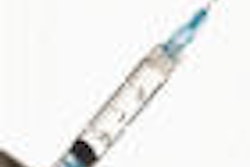Sedation Safety Week kicked off March 12 with a reminder from DOCS Education of key steps dental professionals can take to ensure that patients undergoing sedation in their offices have a safe, comfortable, and effective dental appointment.
DOCS developed the 7-Step Sedation Dentistry Safety Checklist specifically for dentists and oral health professionals:
- Check all monitoring and emergency equipment this week to ensure that it is up to code and in working order, including your pulse oximeter, blood pressure monitor, automated external defibrillator (AED), and supplemental oxygen delivery system.
Make note of the expiration dates of all your oral sedation medications, emergency drug kit medications, AED pads, and AED batteries. Continue weekly checks and documentation of the oxygen levels in your emergency tanks. Place orders this week for any items within 90 days of expiration and restore emergency oxygen tanks to full pressure.
Make certain your office is equipped with an intraosseous infusion system to help you run an IV line in an emergency. This is especially important if you do not have IV certification or are required to have equipment. This equipment provides immediate vascular access for delivering emergency life-savings drugs. Review procedures for using the system.
Run an emergency drill this week and schedule routine practice drills for the months ahead. This is a team-wide effort, and everyone should participate. Review the locations of all emergency drugs and equipment and make sure they are easily accessible.
Review your patient intake procedures with all team members -- specifically for all scheduled sedation dentistry patients. Always cross-reference your patients' medications, supplements, vitamins, and herbs with the sedative and anesthetic medications you plan to administer. Use a comprehensive program, such as Lexi-Comp drug software. If there are any doubts, confer with a patient's physician ahead of any treatment and document the conversation.
Be certain that everyone on your team has current CPR and/or ACLS (Advanced Cardiac Life Support) training. Sign up for a refresher course if necessary or if you feel it would be beneficial. Also, make sure everyone in the office knows how to operate a pulse oximeter and AED.
Register yourself and your team members for refresher courses or advanced training from a trusted and reliable educator. Even those who regularly treat patients with sedation dentistry will benefit from reviewing the very latest safety insights as well as previous course materials.



















